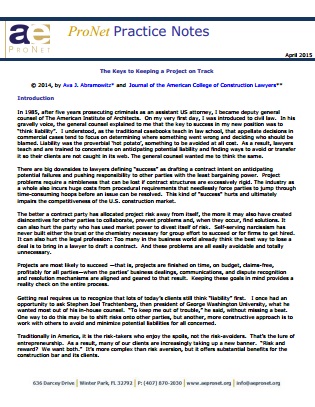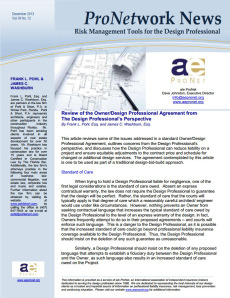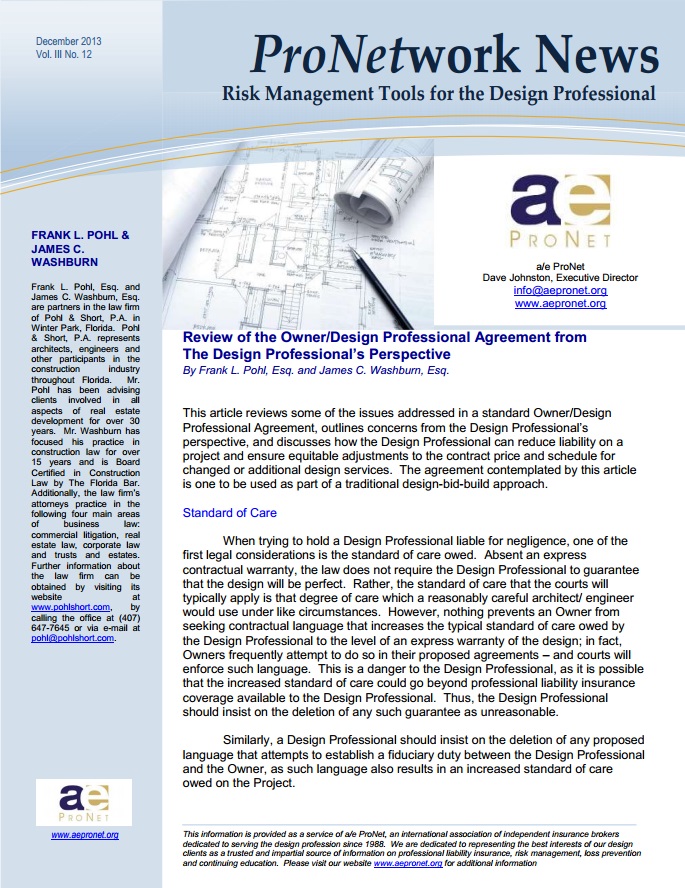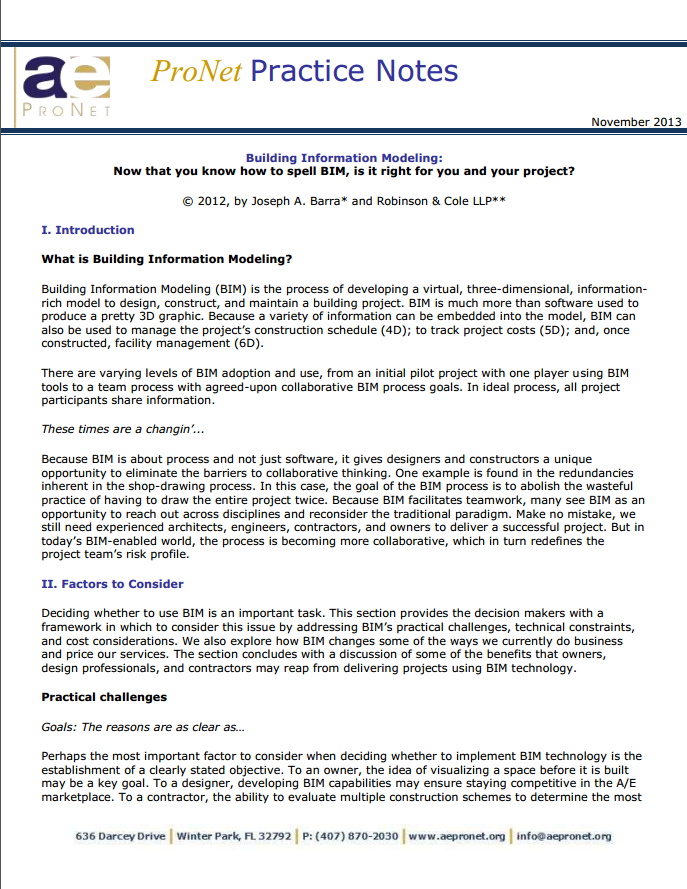 In 1985, after five years prosecuting criminals as an assistant US attorney, I became deputy general counsel of The American Institute of Architects. On my very first day, I was introduced to civil law. In his gravelly voice, the general counsel explained to me that the key to success in my new position was to “think liability”. I understood, as the traditional casebooks teach in law school, that appellate decisions in commercial cases tend to focus on determining where something went wrong and deciding who should be blamed. Liability was the proverbial ‘hot potato’, something to be avoided at all cost. As a result, lawyers teach and are trained to concentrate on anticipating potential liability and finding ways to avoid or transfer it so their clients are not caught in its web. The general counsel wanted me to think the same.
In 1985, after five years prosecuting criminals as an assistant US attorney, I became deputy general counsel of The American Institute of Architects. On my very first day, I was introduced to civil law. In his gravelly voice, the general counsel explained to me that the key to success in my new position was to “think liability”. I understood, as the traditional casebooks teach in law school, that appellate decisions in commercial cases tend to focus on determining where something went wrong and deciding who should be blamed. Liability was the proverbial ‘hot potato’, something to be avoided at all cost. As a result, lawyers teach and are trained to concentrate on anticipating potential liability and finding ways to avoid or transfer it so their clients are not caught in its web. The general counsel wanted me to think the same.
There are big downsides to lawyers defining “success” as drafting a contract intent on anticipating potential failures and pushing responsibility to other parties with the least bargaining power. Project problems require a nimbleness that can be lost if contract structures are excessively rigid. The industry as a whole also incurs huge costs from procedural requirements that needlessly force parties to jump through time-consuming hoops before an issue can be resolved. This kind of “success” hurts and ultimately impairs the competitiveness of the U.S. construction market.
The better a contract party has allocated project risk away from itself, the more it may also have created disincentives for other parties to collaborate, prevent problems and, when they occur, find solutions. It can also hurt the party who has used market power to divest itself of risk. Self-serving narcissism has never built either the trust or the chemistry necessary for group effort to succeed or for firms to get hired. It can also hurt the legal profession: Too many in the business world already think the best way to lose a deal is to bring in a lawyer to draft a contract. And these problems are all easily avoidable and totally unnecessary. Continue reading “The Keys to Keeping a Project on Track”









